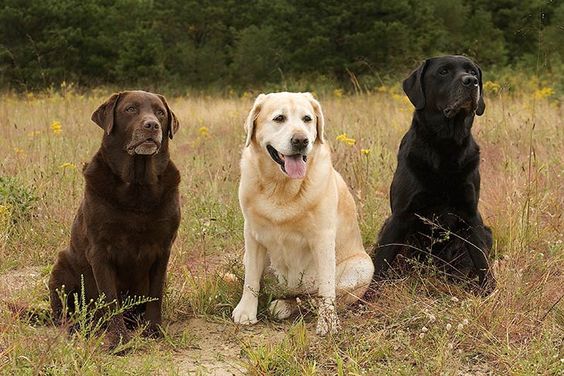Labrador Retriever
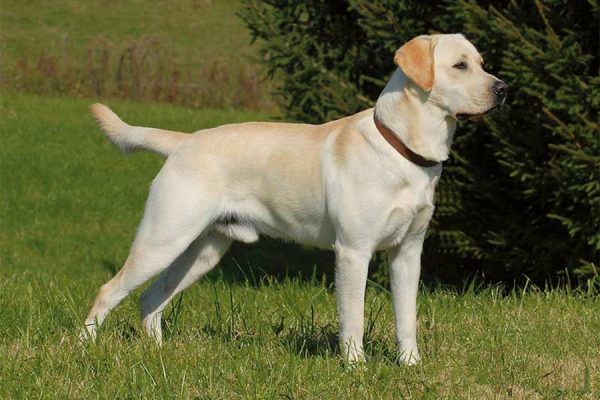
It’s hard to find a dog with a more obedient and affectionate personality than the Labrador Retriever. Just one look at a Labrador will tell you for sure that this is a good friend and a faithful helper. Labradors are by nature designed to help people. No matter what this help is because the Lab is good at any job.
Table of Contents
Breed Information
| Another Name | Labrador |
| Origin | United Kingdom, Canada |
| Height | Males 56-58 cm Females 54-56 cm |
| Weight | 25-36 kg |
| Fur | Short |
| Color | Black, pale, brown |
| Lifespan | 10-13 years |
| FCI Classification | Retrievers – Flushing Dogs – Water Dogs |
| Group | Hunting dogs |
| Price | From $300 |
Breed Photos
Origin History
The history of the Labrador Retriever breed begins in the 19th century. Unfortunately, there are no reliable facts about the original formation of the breed. One of the most common versions of the origin is that the Labrador Retriever lived on the island of Newfoundland. There he was used by the local fishermen, whom he helped to bring birds and fish. By the way, the fishermen called the dogs of the breed “little Newfoundlands”. Labradors were brought to England by traveler Peter Hawker. It is known that such breeds participated in breeding Labradors: English Foxhound, Curly-haired Retriever, and Setter.
The first standard for the breed was adopted in 1887. Initially, the English Kennel Club only recognized the black color variant of Labradors. And only at the end of the XX century, the standard was extended to include pale and chocolate colors for Labrador Retrievers. The club of breed amateurs was founded in 1916. Recognition by the Fédération Cynologique Internationale was granted to Labradors in 1954.
There is also much disagreement about why the breed is named “Labrador”. Some researchers are sure that the first representatives of the breed were black – their name corresponds to the dark stone “labradorite”. Another version says that the dogs are named after the peninsula Labrador in eastern Canada. And the last theory says that the Portuguese, for their working qualities so nicknamed labradors. After all, “Labrador” in Portuguese means toiler. Now the Labrador Retriever remains one of the most popular breeds, not only among hunters in different countries. Increasingly, the Labrador is used as a guide dog and rescue dog in water services.
Appearance
The Labrador Retriever is not confused with any other breed. It is a strong, noble, and very beautiful dog. The body is wide, and the dog is square. Very strong loincloth. A broad skull. The transition from the forehead to the muzzle is well defined. The muzzle is massive. The eyes are medium-sized, dark in color, and almond shape. The eyes are gentle and attentive. The ears are small, floppy, and close to the head. The neck is strong. The chest is deep. Limbs with developed musculature.
The gait of the Labrador is loose and sweeping. A distinctive feature of the breed is considered thick at the base of the tail. It is of medium length, well covered with wool, and slightly tapered to the end. It never curls on the back. The coat is short and thick, with a moisture-resistant undercoat. It feels as if it is double. Allowed colors: only monochrome black, brown or pale. In black, the standard allows a small white spot on the chest.
Character
It’s hard to find a dog with a more obedient and affectionate personality than the Labrador Retriever. Just one look at a Labrador will tell you for sure that this is a good friend and a faithful helper. Labradors are by nature designed to help people. No matter what this help is because the Lab is good at any job. As a hunter or guide dog for the visually impaired and as a therapy dog for the mentally disabled.
A sharp mind and developed sense of smell also came in handy for Labradors in the customs service, where they are often used. Perhaps the only thing the Labrador Retriever does not excel at is watchdog instinct. The breed is too kind and will not be able to fight back against detractors.
Labrador is great with children and suitable for a large friendly family. It very much needs attention from the owner. Loves long walks and active games in the fresh air. The tendency to aggression is absent at all. It also applies to the attitude of other animals. Labrador will find common ground with any pet.
Care
Keeping a Labrador Retriever in your home won’t be too much trouble. It is enough to adhere to standard hygienic recommendations for the care of the pet. Labradors’ shedding is a seasonal affair, but the thick coat still needs regular combing. Comb your pet several times a week.
You do not need to bathe the Labrador often – once every three to four months is enough. Particular attention should be paid to Labrador’s ears, as dirt and moisture can accumulate in them. To prevent inflammation, clean Labrador’s ears every few days. Claws tend to shrink on their own; if that is not enough, trim them monthly.
Training
It is a breed that responds quickly to commands from its owner and has a good memory. Labrador Retriever is a smart and energetic dog that lends itself well to training. Not for nothing that the breed takes seventh place in the rating of the most intelligent dogs in the world. Classes with the owner will only be a joy for the Labrador; he will try to fulfill all the owner’s instructions.
Common Diseases
Labrador Retriever owners and breeders say the dog is in good health. However, there is still a risk of some diseases, including hereditary diseases:
- deafness;
- allergic reactions;
- pododermatitis (inflammation between the toes and on the pads of the dog’s paws);
- otitis media;
- lipoma;
- eye infections (cataracts, retinal atrophy);
- diabetes mellitus;
- obesity;
- osteochondrosis;
- elbow or hip dysplasia.
Nutrition
When buying a Labrador puppy, you should understand that the pet can gain excessive weight without proper exercise and activity. Therefore, you need to monitor Labrador’s diet carefully. The diet should be balanced, including lean meat and all the necessary vitamins for the normal formation of the dog’s skeleton.
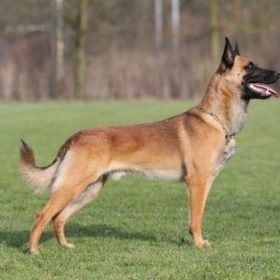 Belgian Shepherd Malinois
Belgian Shepherd Malinois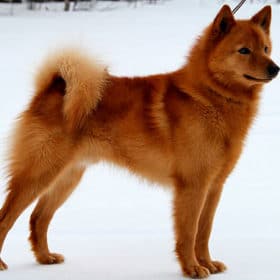 Finnish Spitz
Finnish Spitz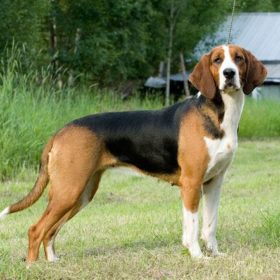 Finnish Hound
Finnish Hound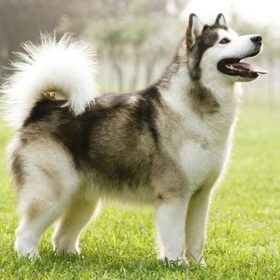 Alaskan Malamute
Alaskan Malamute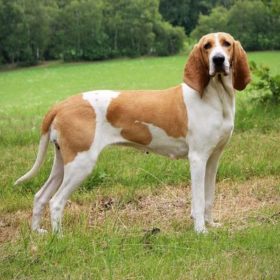 Schweizer Laufhund
Schweizer Laufhund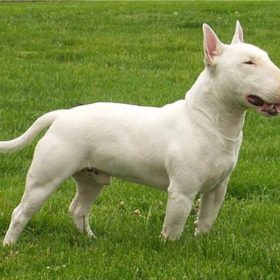 Bull Terrier
Bull Terrier

